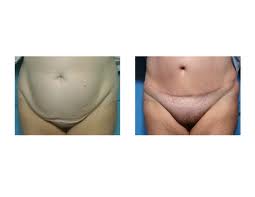
But despite these perceptions and experiences of plastic surgeons, do these high satisfaction rates translate into an improved quality of life for the patient? Besides the better shape of the waistline and stomach area, does it improve a patient’s self-esteem and their overall life? In end, the value of any cosmetic procedure is primarily about how it makes a patient feel and secondarily about the improved cosmetic change.
In the June 2012 issue of Plastic and Reconstructive Surgery, a study reported on the effect of abdominoplasty on quality of life, self-esteem and emotional stability…those factors not seen in before and after pictures. Through self-developed questionnaires, the Rosenberg Self-Esteem Questionnaire and the Freiberg Personality Inventory, sixty-three abdominoplasty patients from Germany and Greece participated in the study. In all areas tested, increasing values were found. Nearly 85% were satisfied with their cosmetic outcome, over 90% would have the surgery again, and nearly 90% would recommend the operation. High ratings were given for self-esteem and emotional stability.
The authors of the study conclude that tummy tuck surgery improves quality of life, particularly family life, mobility and independency from assistance. Equally important, patient’s self-esteem and emotional stability were very high after surgery. This study confirms what most plastic surgeon know from a lot of experience, tummy tuck patients feel better about themselves after surgery.
A tummy tuck encompasses a wide range of aesthetic trunk issues. From the smaller 5’ 2” petite woman with a small amount of loose lower abdominal skin over multiple pregnancies to the larger 6’ 3” man who has lost over 125lbs after bariatric surgery, a tummy tuck is a diverse collection of abdominal skin and fat excesses. Some patients are bothered by the aesthetics of some loose skin and a few stretch marks while others have issues of hygiene and chronic skin infections from an overhanging pannus.
Satisfaction from having a tummy tuck depends to a large degree on how effectively it solves the primary problem for having it. Given that there is a relatively low horizontal scar left in its wake, the aesthetic trade-off in more minor abdominal contour deformities may lead to a higher rate of dissatisfaction. Although this study did not separate patients by the magnitude of their deformity, I suspect those patients who reported dissatisfaction with the tummy tuck procedure did not feel that the scar was a better substitute than their primary abdominal concerns.
Dr. Barry Eppley
Indianapolis, Indiana


